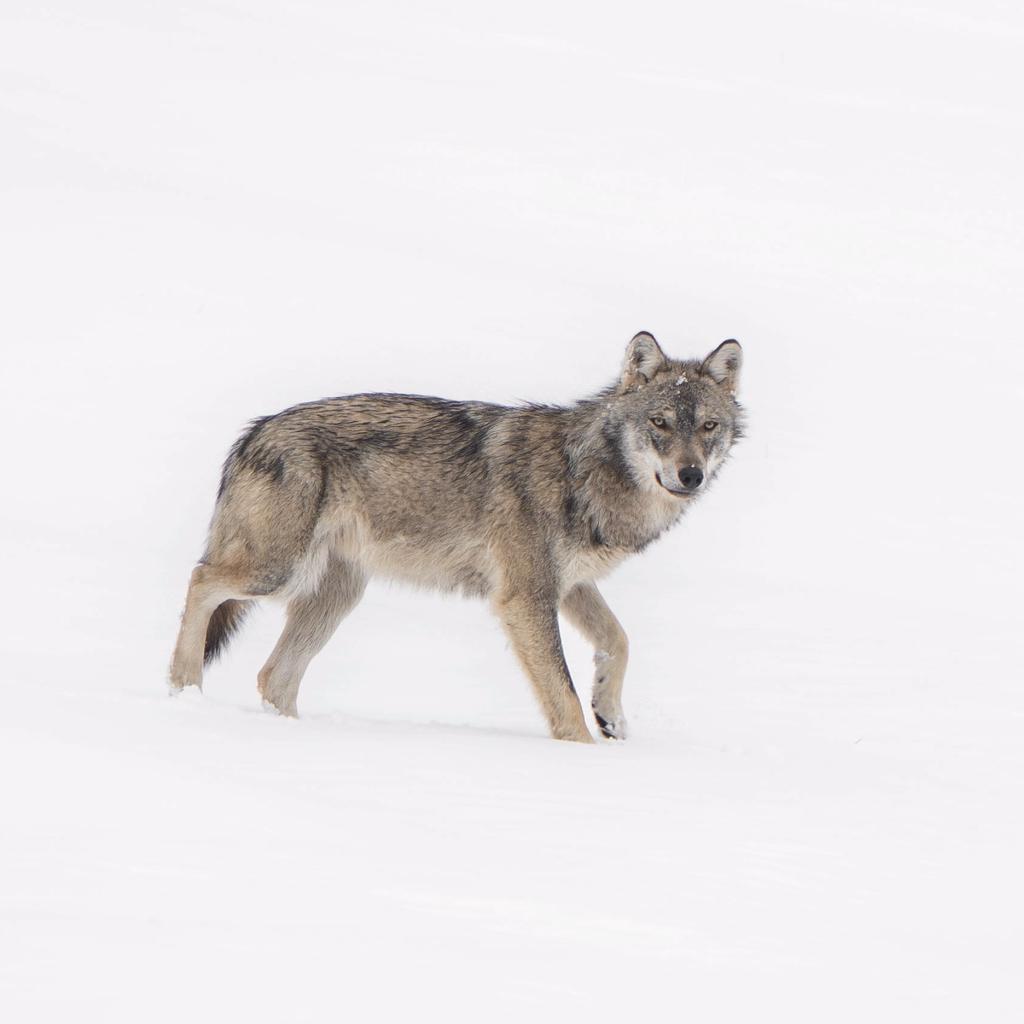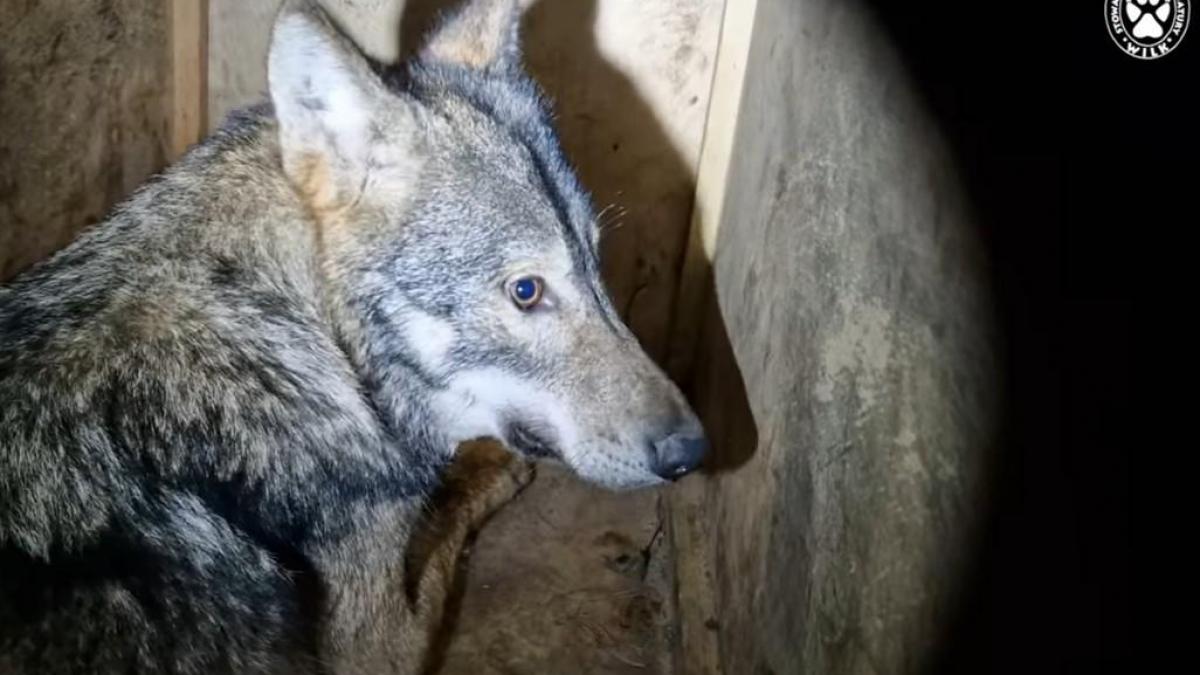The wolf has been one of the world's most studied wild animals for almost a century. But when you consider the predator's habits, the size of its territory and its constant, mainly nocturnal, long-distance movements, it's clear that studying it is an extremely arduous task. To understand certain areas, or to test protective measures, studies were carried out in anthropized environments, particularly with regard to interactions and all aspects of intra-species behavior. Then, with the advent of more sophisticated observation, photographic/video and travel equipment (cameras, thermal vision, quad bikes, snowmobiles, airplanes, etc.), studies were finally able to take place in the wolf's true habitat : nature.
In the words of David Mech, one of the world's leading wolf specialists, who has been studying wolves since the 1960s : "Much has been written about the hunting behavior of wolves, and they have often been credited with the use of teamwork and complex strategy in their quest for food. However, most conclusions about the hunting habits of the wolf have been based on hearsay, old published descriptions by nonobjective observers, and interpretations of tracks in the snow. Actual observations of wolves hunting prey are scarce, and accurate published accounts of these incidents are even scarcer.”
This just goes to show the complexity of obtaining real, well-founded information and insights into which hunter the wolf really is. Since this quote from D. Mech, many biologists, particularly in the USA, have continued to study wolves in the wild. In the USA, airplanes are often used to track wolves and attend pack hunting parties, the environment allowing it. Since then, it has been possible to observe numerous attempts and predations by packs on wild prey, such as deer, elk, caribou, bison and even Arctic hares.
This is what emerges from the many studies carried out over decades on the wolf : he's a very perceptive hunter, a predator capable of very quickly assessing the cost-benefit ratio of attacking prey. In short, wolf knows when he can attack and have food for several days, but also when the attack could be dangerous (injury) or fatal for him. White-tailed deer, one of the smallest ungulate species among the American wolf's prey, have already killed wolves. A misplaced blow from an antler or paw can kill the wolf on the spot or subsequently (infection, inability to hunt leading to weakening and death). This ability to quickly assess the "advantages/disadvantages" ratio, even when choosing weaker, older, sicker, wounded or inexperienced prey, is proof of the wolf's intelligence and adaptability.
To feed, wolves must catch up with their fleeing prey, slow it down, put it down and then kill it, notably by biting its throat and/or neck (choking, cutting its throat or breaking its cervical spine). For larger prey, such as elk or bison, which often resist, wolves must confront them and attempt to bite them until they're unable to defend themselves. Because of this prolonged struggle, wolves are much more vulnerable to injury or death from their prey than felines. Felines can use their paws and are highly flexible, weapons that wolves don't possess.
In addition to the wolf's physical adaptations, specialists believe that wolves possess several behavioral/psychological/cognitive characteristics that enable them to adapt to their hunting lifestyle. These include perseverance/persistence, coordination, cooperation, concealment, strategy and cognitive mapping. Wolves have a great capacity for learning and enjoy good cognitive functioning. Several experimental studies show that wolves learn various tasks at least as well as domestic dogs and, for some tasks, better than dogs.
Sophisticated tests of wolf cognition show that wolves are excellent at using visual communication. This trait is certainly useful when hunting with other wolves. It has been observed (Clarke, 1971) that coordination between wolves in hunting circumstances is apparently achieved through visual exchanges, and that wolves do not vocalize while hunting. Furthermore, wolves show greater perceptiveness than malamutes in standard laboratory tests (Frank, 1989) and sometimes appear to display foresight, understanding and planning ability as part of their hunting strategy (Mech, 2007). The use of any of these traits during the hunt would be strongly selected by the animals' need to kill without being killed.
Coming soon: what a hunter the wolf really is - the conclusion
Article: TT - Wolf Mission
Photo : Jacques Bibinet
Ref : D. Mech, D. Smith & D. MacNulty


